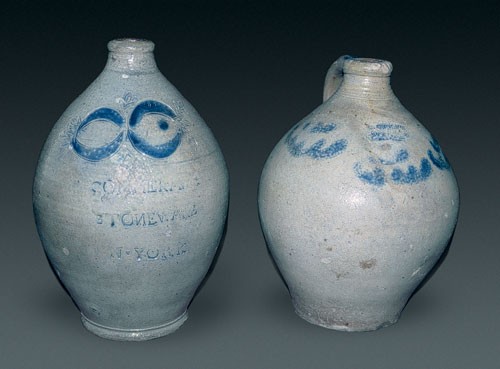Early Potters and Potteries of discount New York State By William C. Ketchum Jr, 1970 Funk & Wagnalls HC, DJ, VG. Antiques, American History
Early Potters and Potteries of New York State
By William C. Ketchum, Jr.
Published by Funk & Wagnalls, 1970
Hardcover, Dust Jacket
Mylar Sleeve
Very Good Condition. The book and dust jacket are clean, secure binding, crisp inner pages, unmarked, no writing, no highlighting, no stains, no fading, no ripped pages, no edge chipping, no page folds, no crease marks, no remainder marks, not ex-library. Some light dust jacket and surface wear from age, use, storage and handling.
Free USA Shipping
>>>>
Written by an experienced antiquarian, this book explores the history of utilitarian pottery production in New York State, beginning with the Dutch in Manhattan. The subject matter ranges across the entire state, from Long Island and the Mohawk and Hudson valleys, to the St. Lawrence, Lake Erie, and the Southern Tier. Includes an Appendix lisiing all of the potteries, their dates of operation and types of ware produced, as well as all known pottters' mark. With 18 illustrations including a map of pottery sites.
>>>>
American art pottery refers to aesthetically distinctive hand-made ceramics in earthenware and stoneware from the period 1870-1950s. Ranging from tall vases to tiles, the work features original designs, simplified shapes, and experimental glazes and painting techniques. Stylistically, most of this work is affiliated with the modernizing Arts and Crafts (1880-1910), Art Nouveau (1890–1910), or Art Deco (1920s) movements, and also European art pottery. Art pottery was made by some 200 studios and small factories across the country, with especially strong centers of production in Ohio (the Cowan, Lonhuda, Owens, Roseville, Rookwood, and Weller potteries) and Massachusetts (the Dedham, Grueby, Marblehead, and Paul Revere potteries). Most of the potteries were forced out of business by the economic pressures of competition from commercial mass-production companies as well as the advent of World War I followed a decade later by the Great Depression.
The American art pottery movement is a development from a tradition of individual potters making utilitarian earthenware and stoneware vessels for local use that dates back to the Colonial period. It was shaped to differing degrees in different geographical locations by the potters' appreciation for Native American pottery traditions, the Japonism vogue, and modernist aesthetics. Influential figures in American art pottery include Frederick Hurten Rhead, who worked with several different discount art potteries, and Maria Longworth Nichols, whose Rookwood Pottery produced what is today considered some of the very best American art pottery. The earliest examples of American art pottery often follow a Victorian aesthetic and feature highly detailed representational subjects such as portraits of Native Americans painted across a muted background. Later types are more likely to feature designs that are graphic, linear, and abstract, in line with the aesthetics of the Arts and Crafts, Art Nouveau, and Art Deco movements. Flowers and animals like Rookwood's eponymous rook remained popular subjects for decorations throughout the period. Some pieces have three-dimensional features, such as designs that are incised into the surface rather than painted on top, or raised elements like slip-trailed patterns or low-relief sculptures.
While many of the key figures in the movement founded or were affiliated with specific potteries, a few remained essentially independent throughout their careers. Notable in this group are John Bennett, who worked in New York and New Jersey, and Adelaïde Alsop Robineau, whose Scarab Vase is considered one of the finest examples of American art pottery. Also operating "independently" was the vast factory of Edwin Bennett in Baltimore which periodically produced fine examples of art pottery, although the overall focus of the business was industrial. Many American museums hold collections of American art pottery. Especially large collections are at the Charles Hosmer Morse Museum of American Art, the Cooper-Hewitt Museum and the Cincinnati Art Museum, which has an entire wing dedicated to Rookwood wares.





